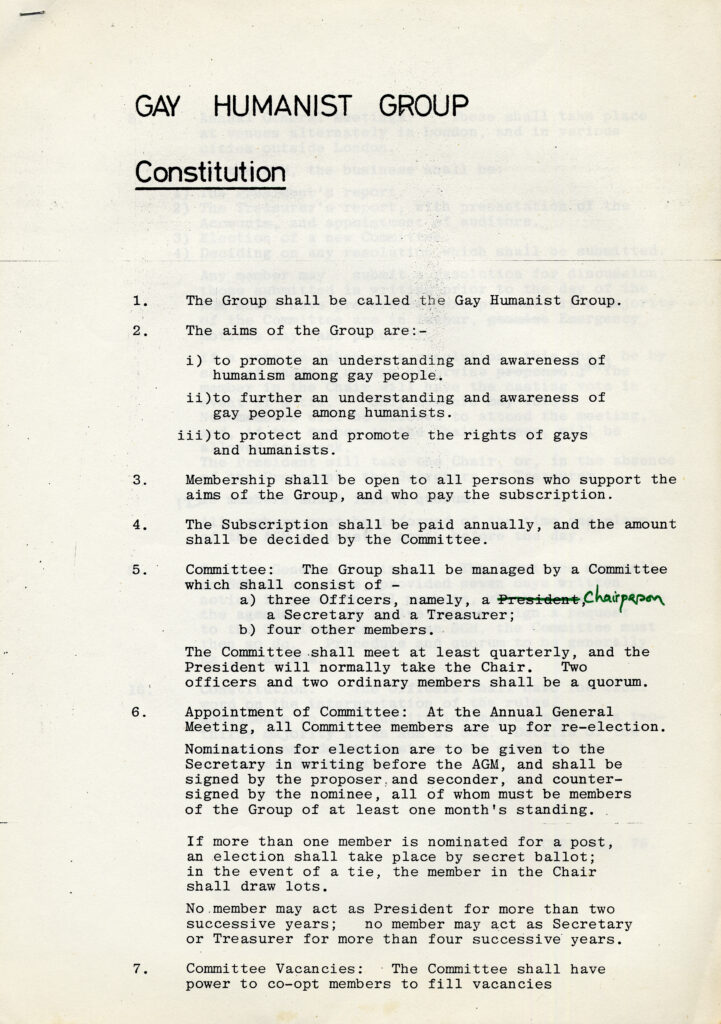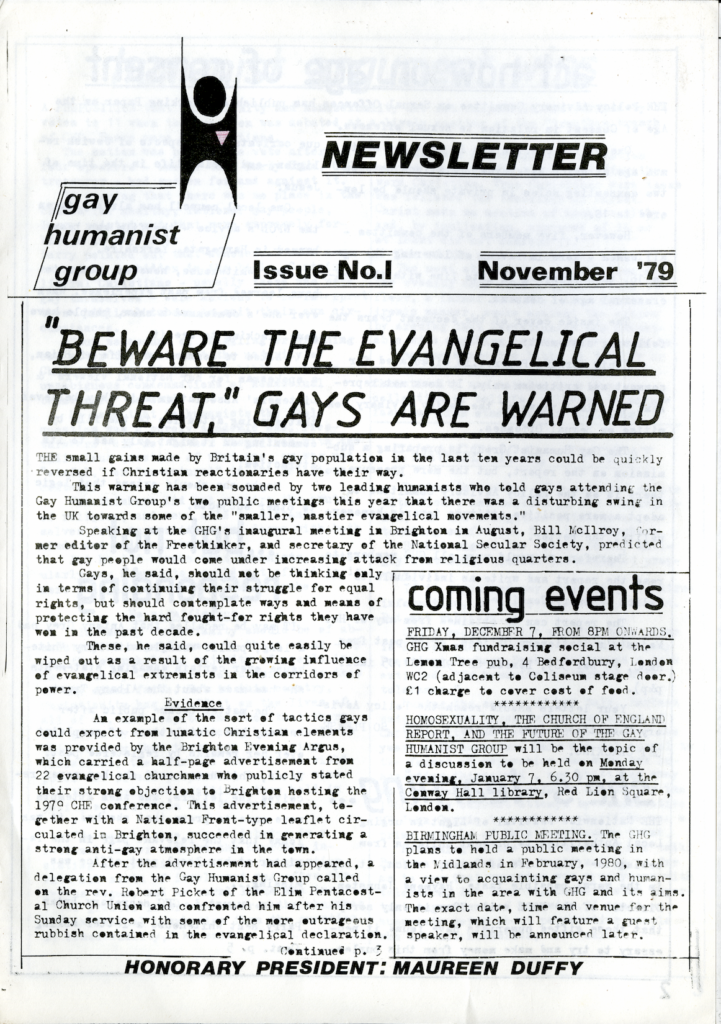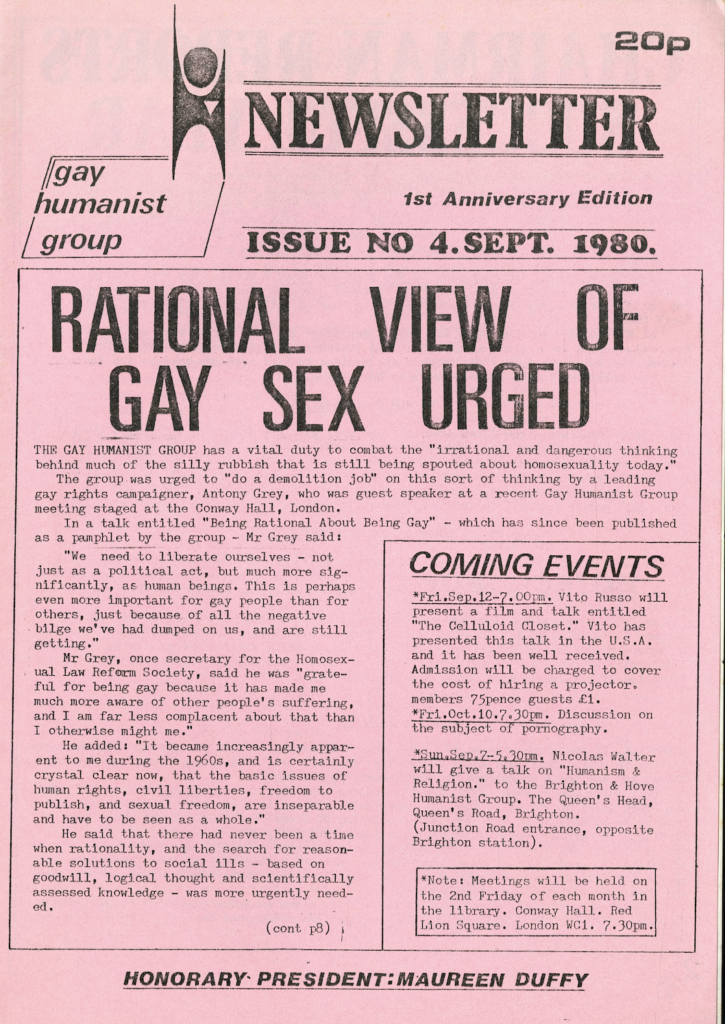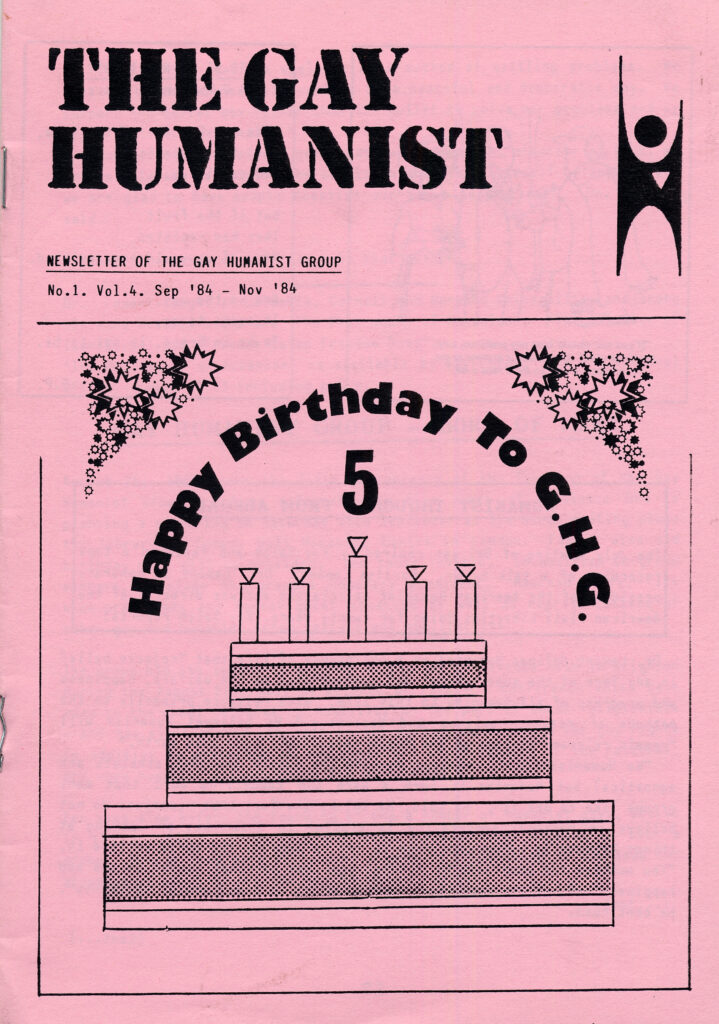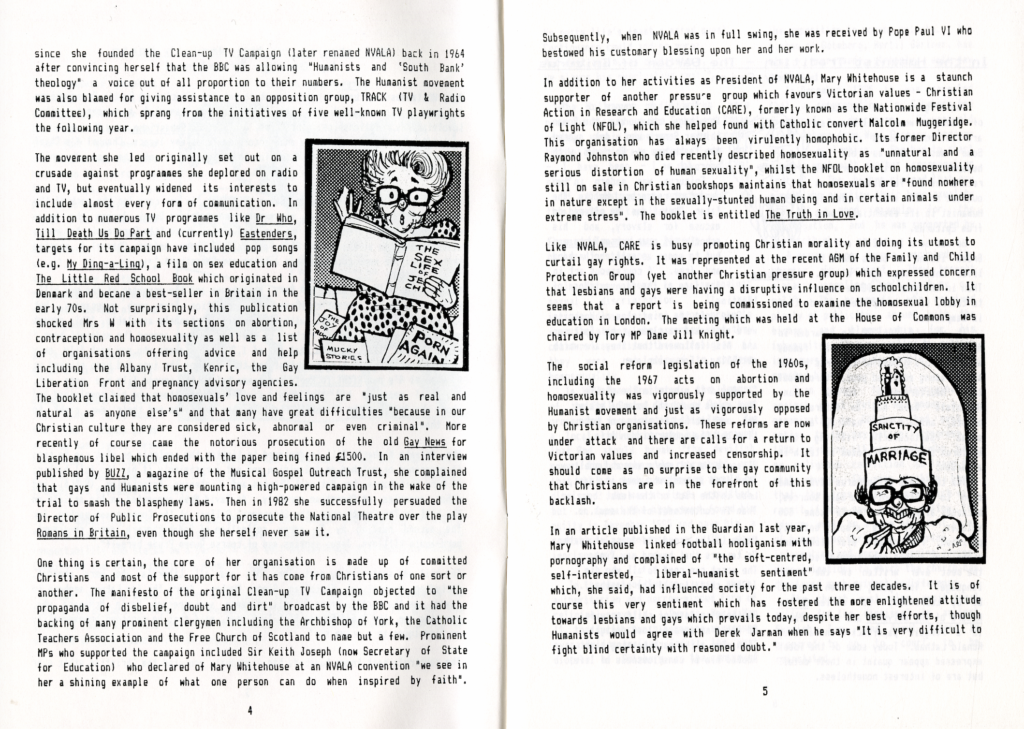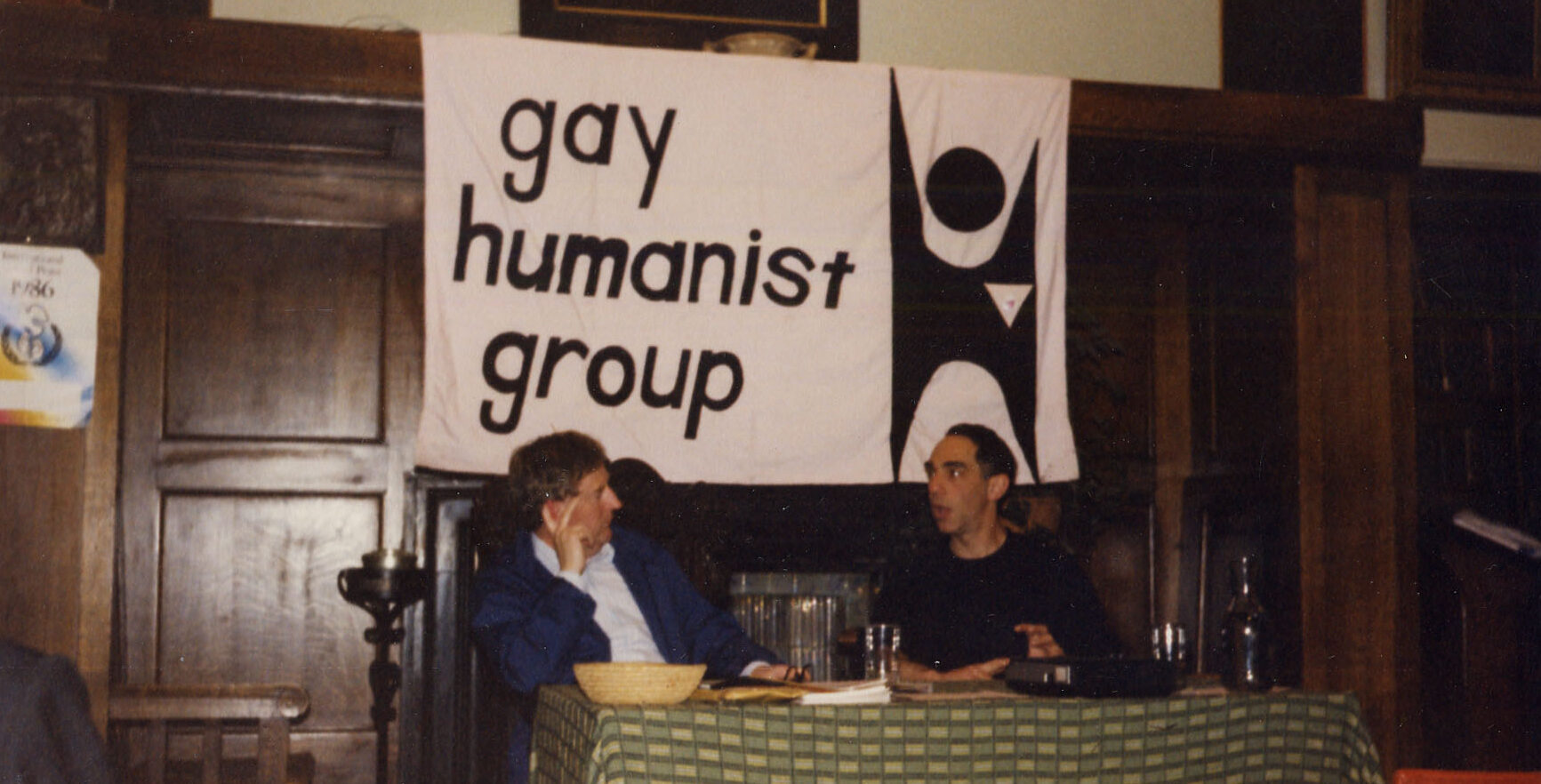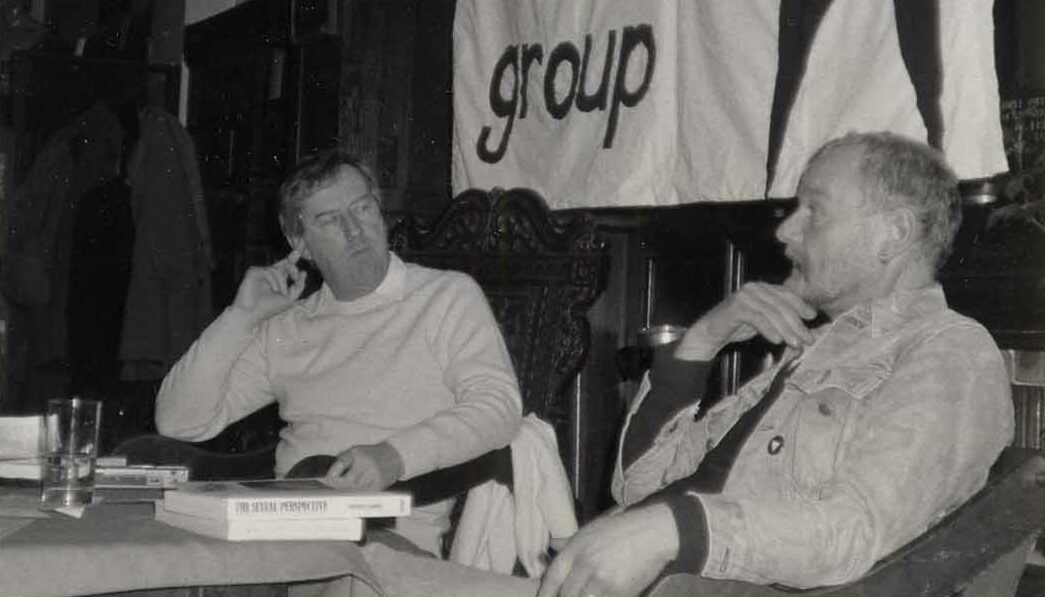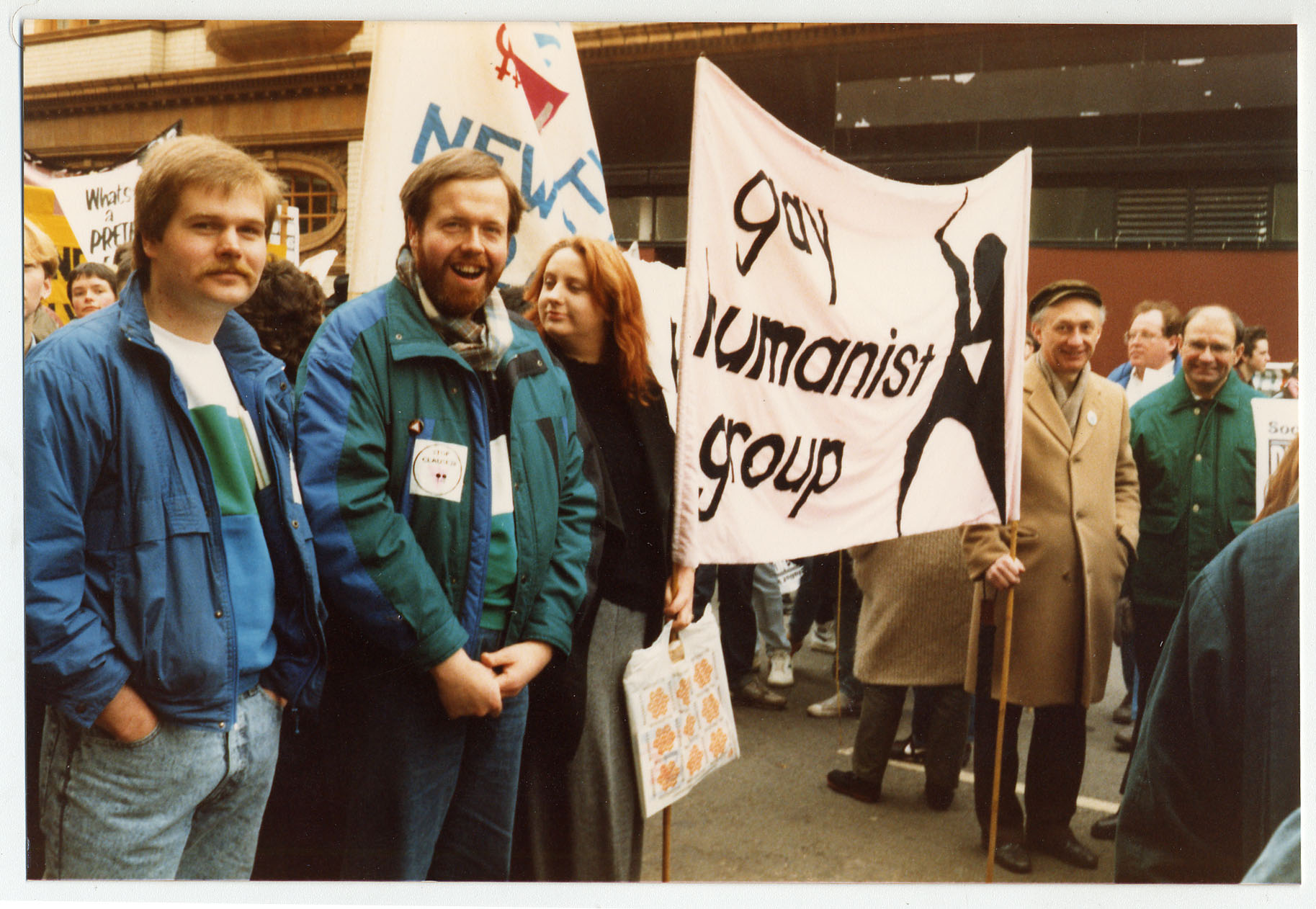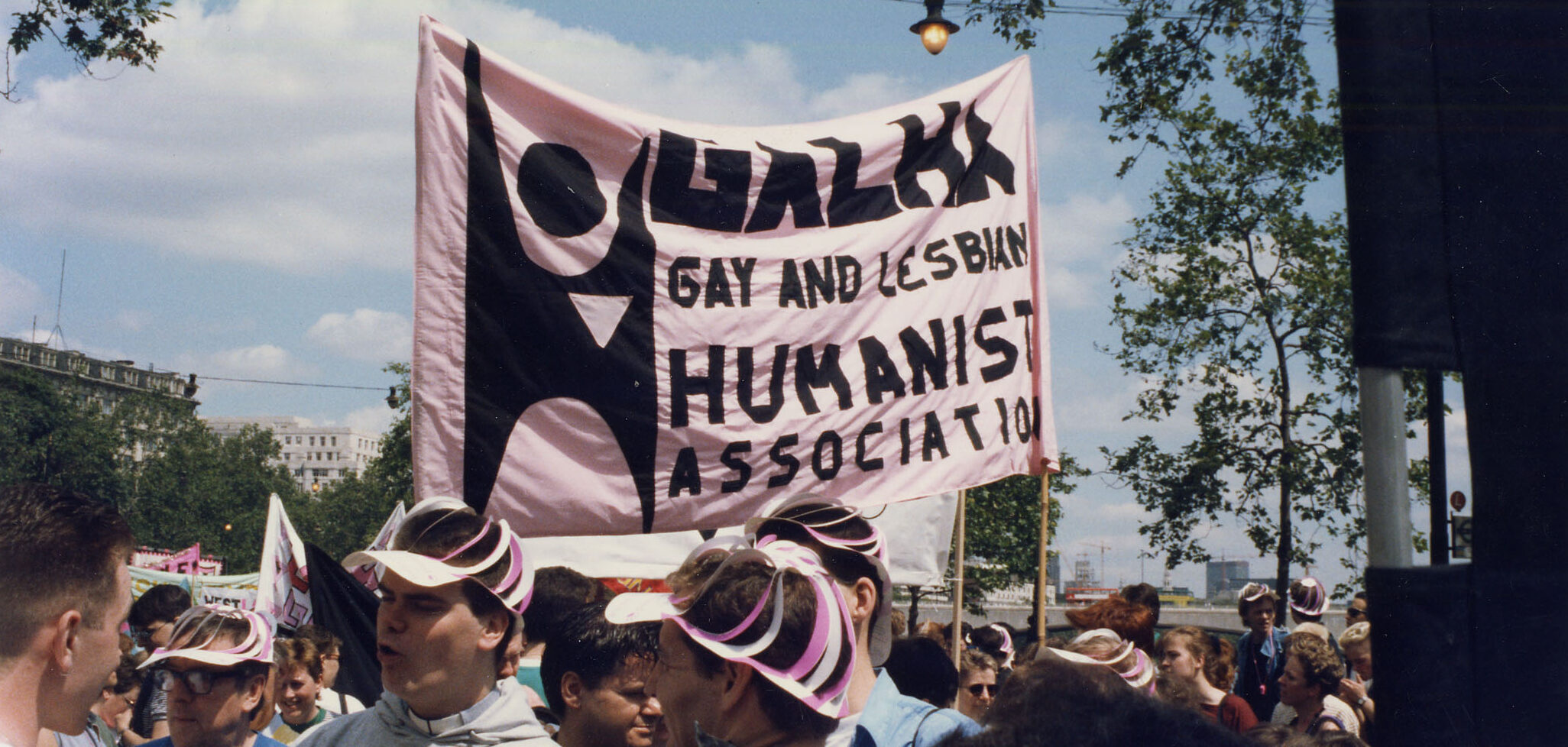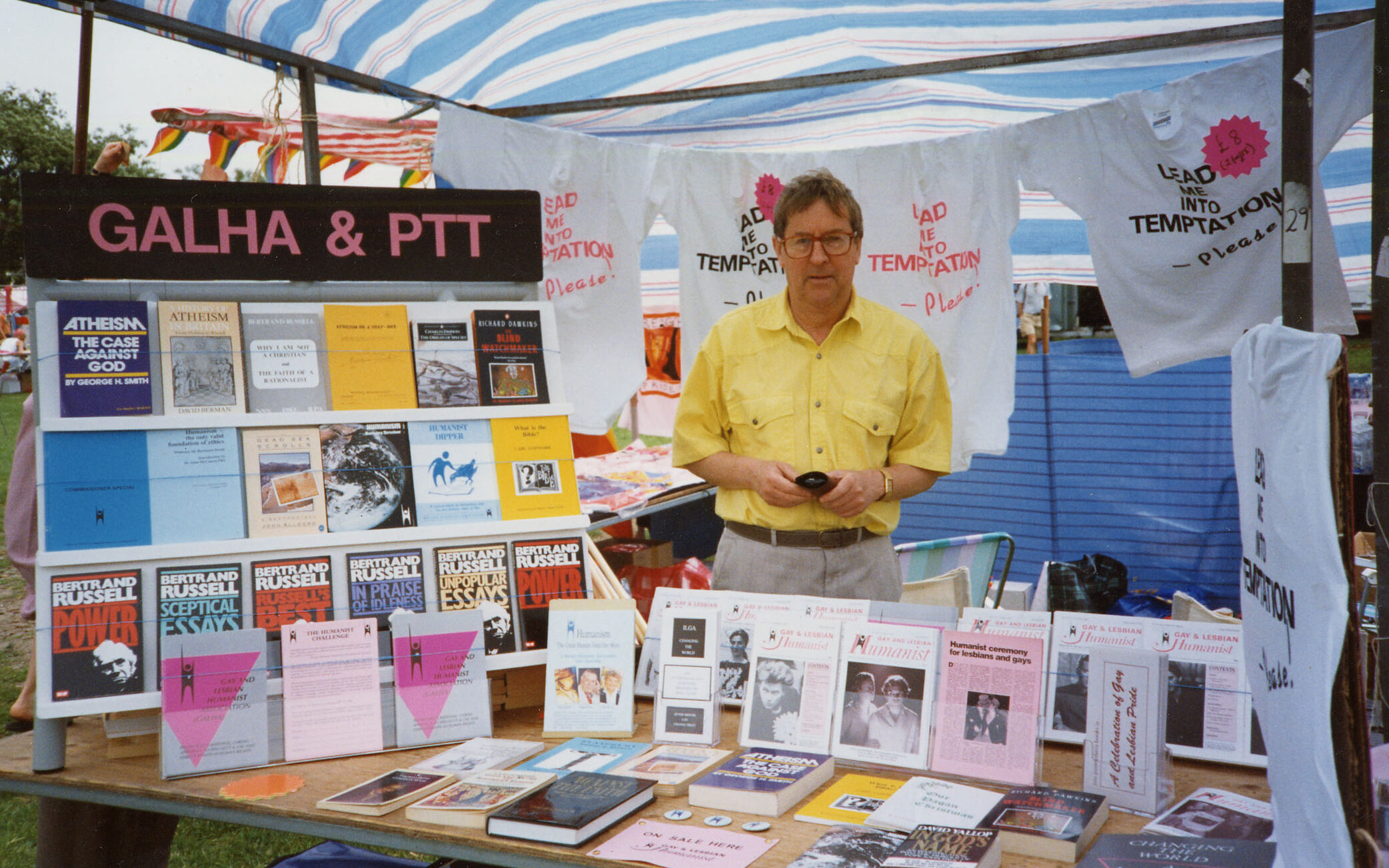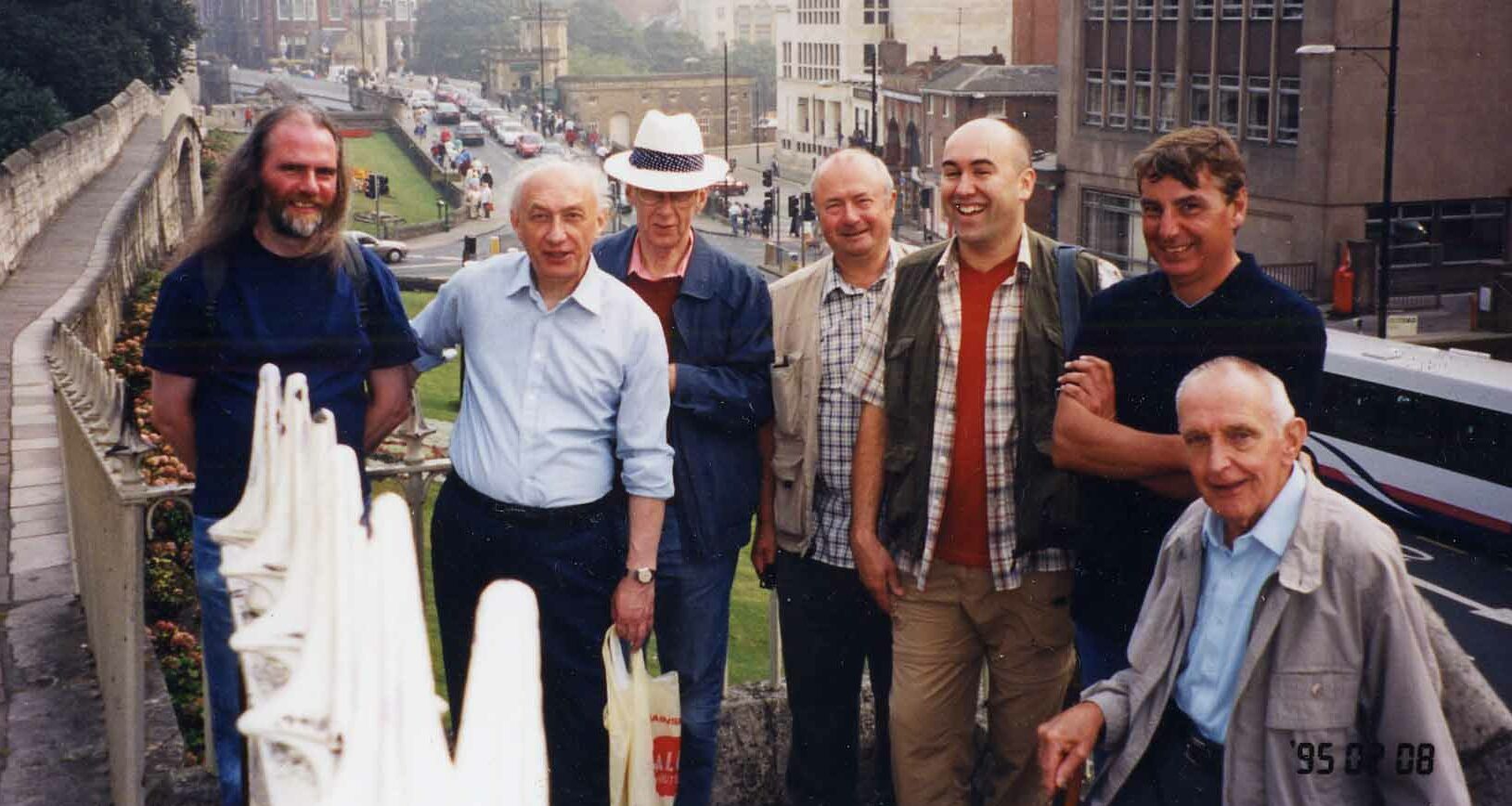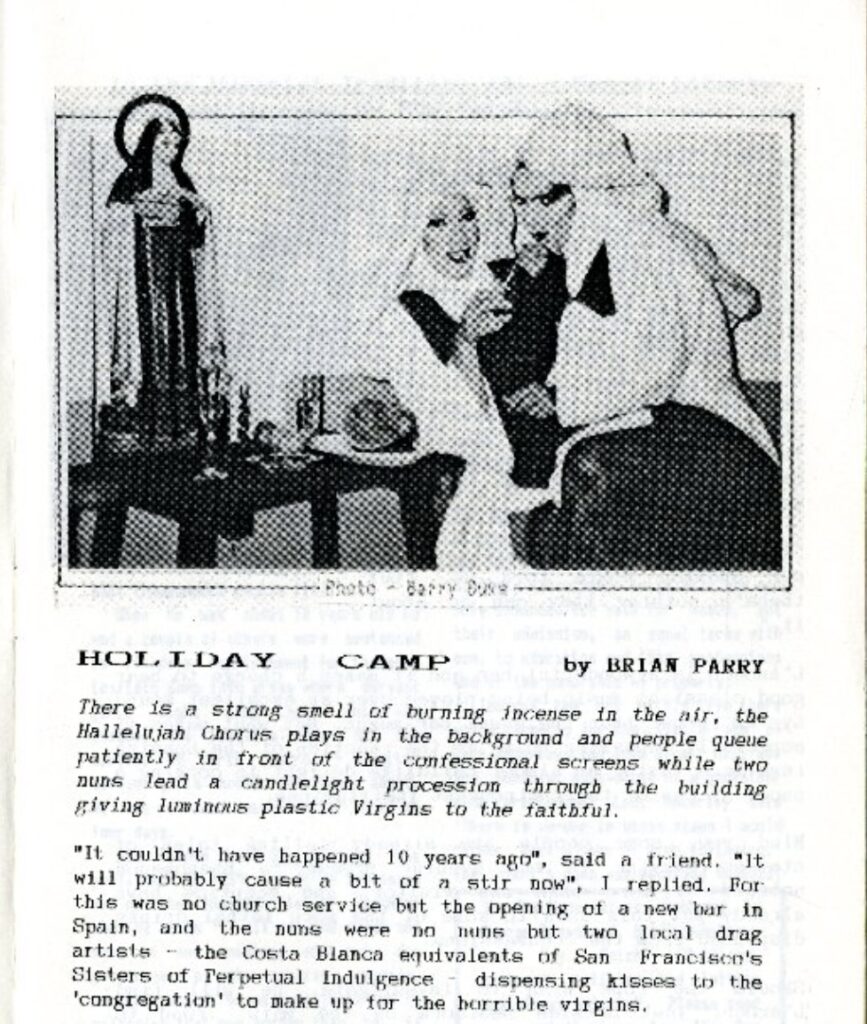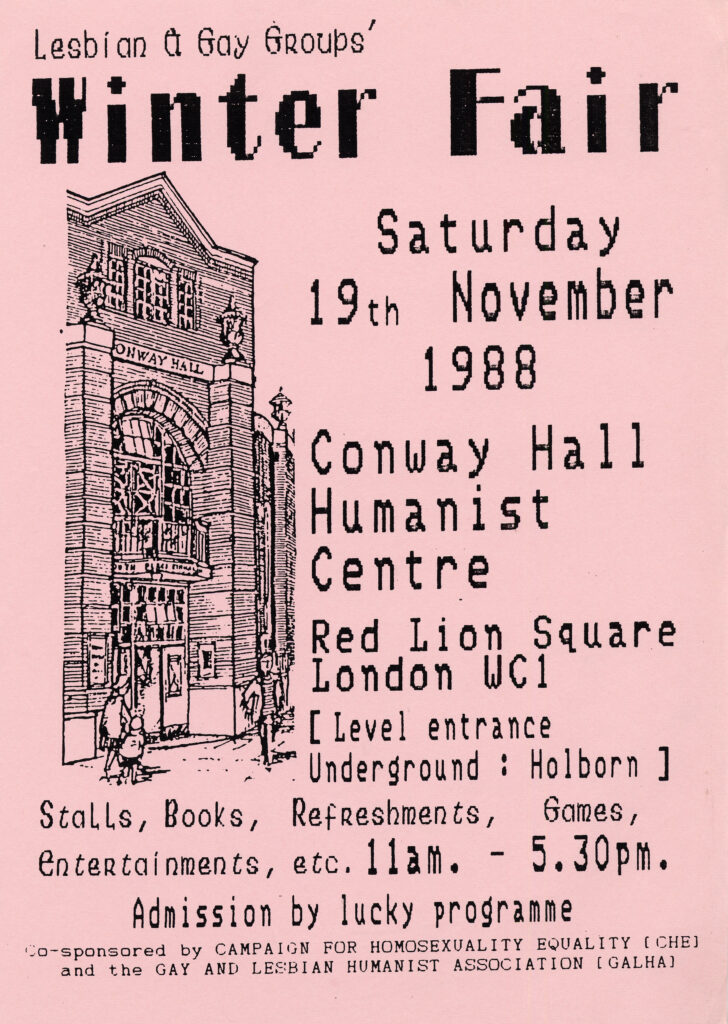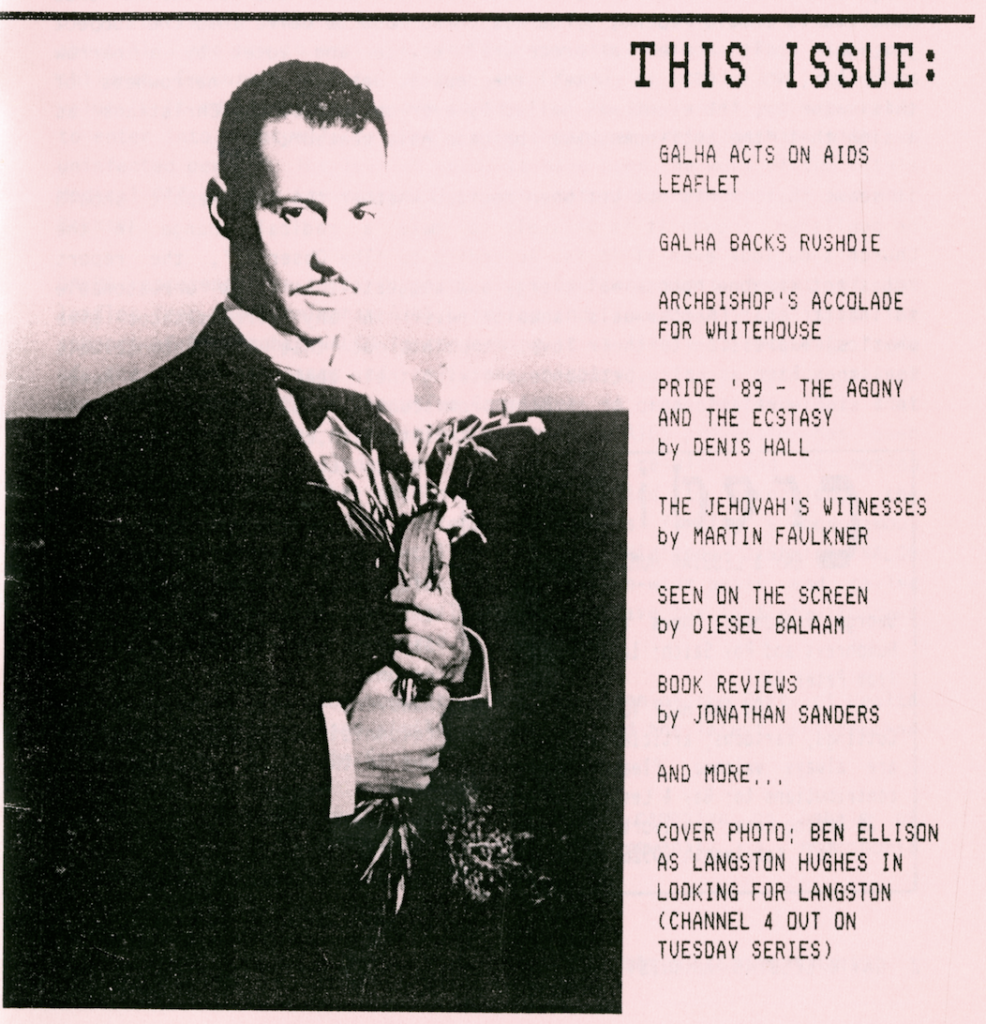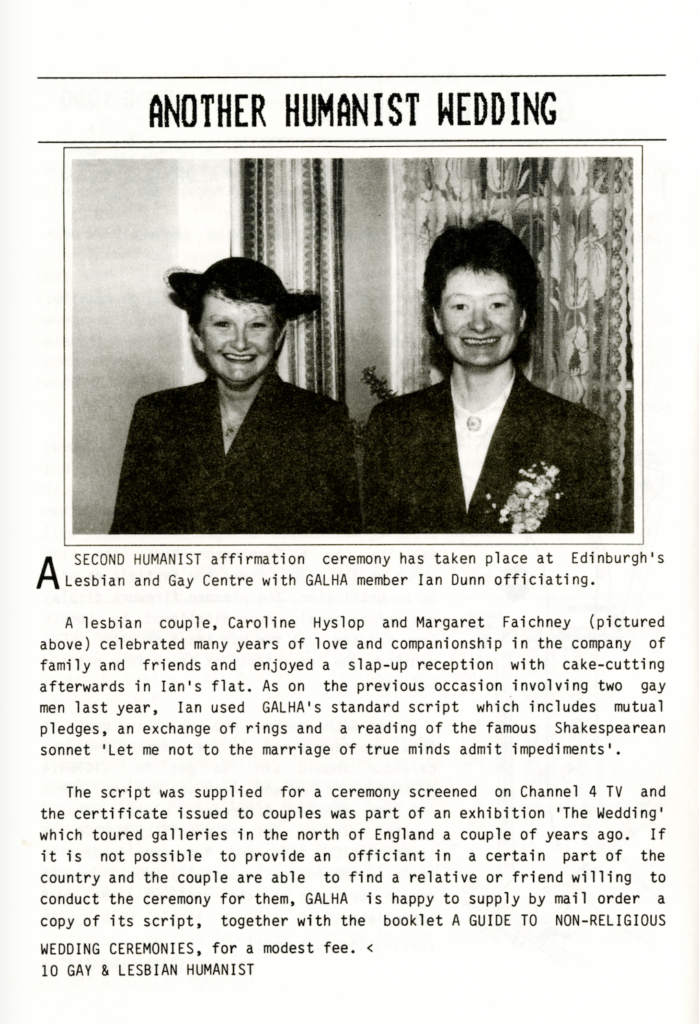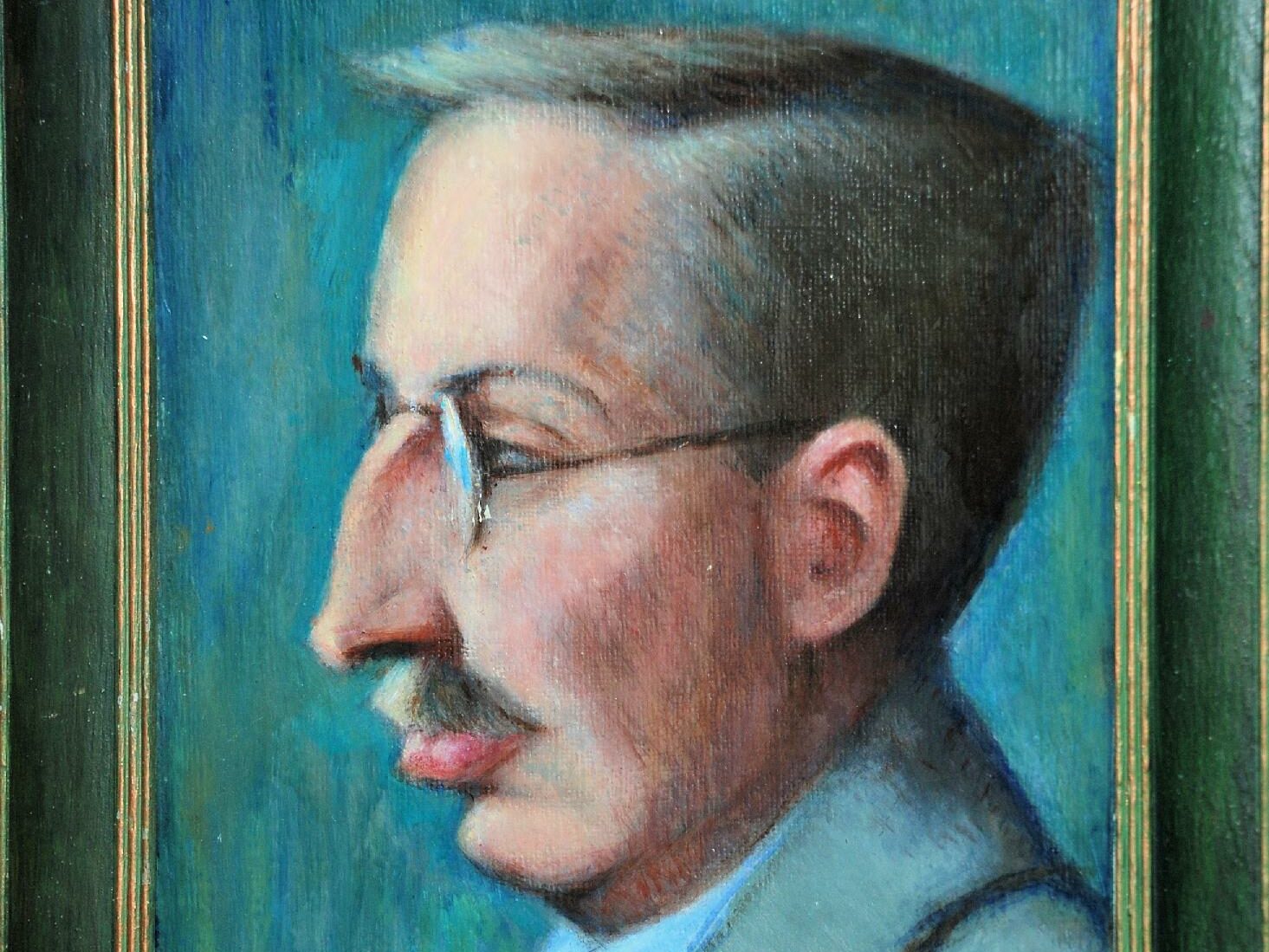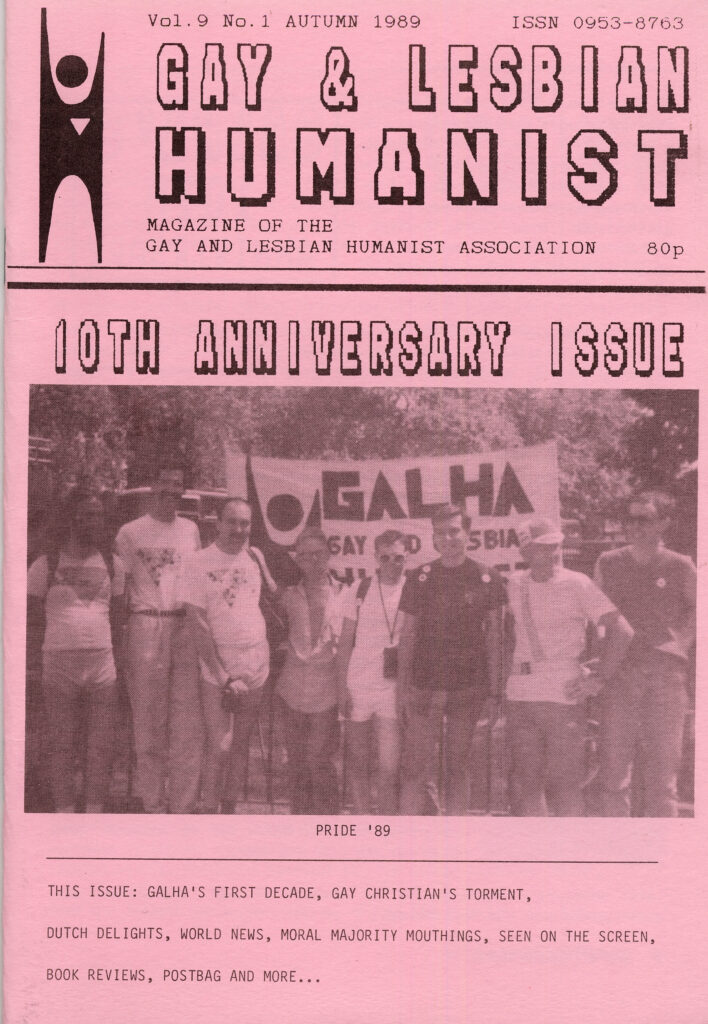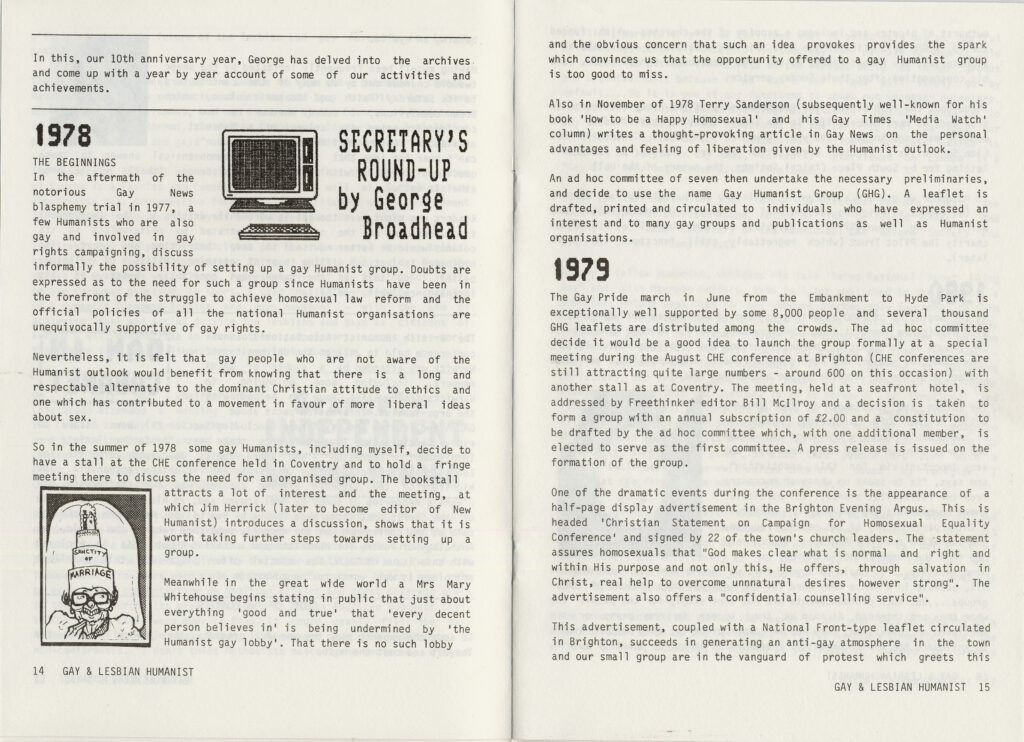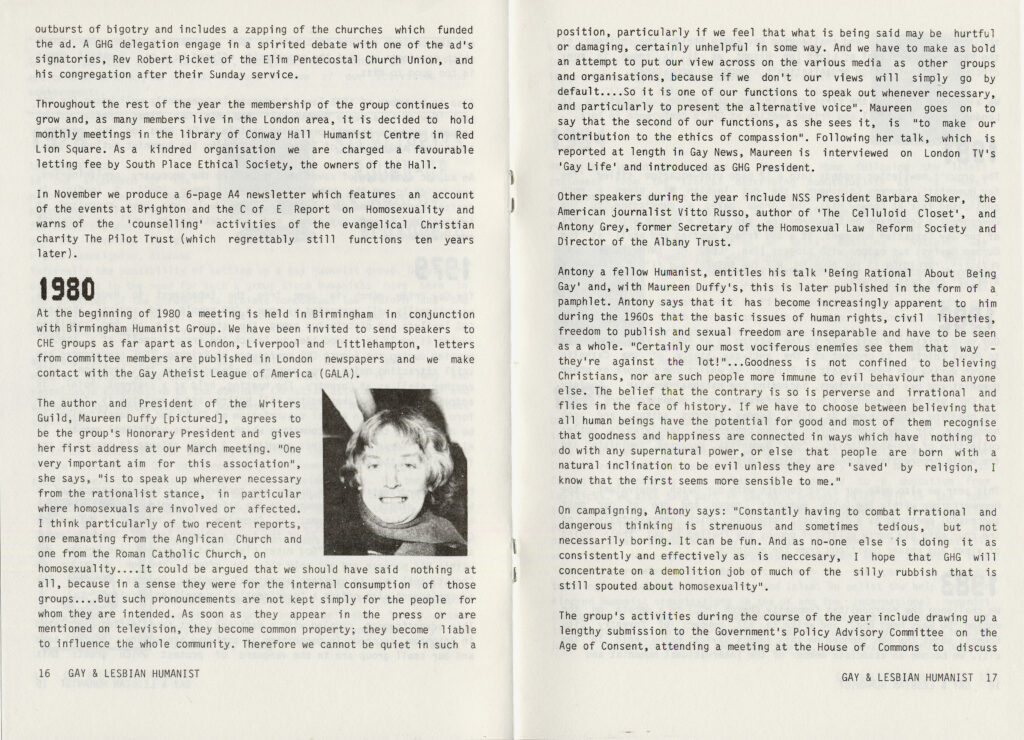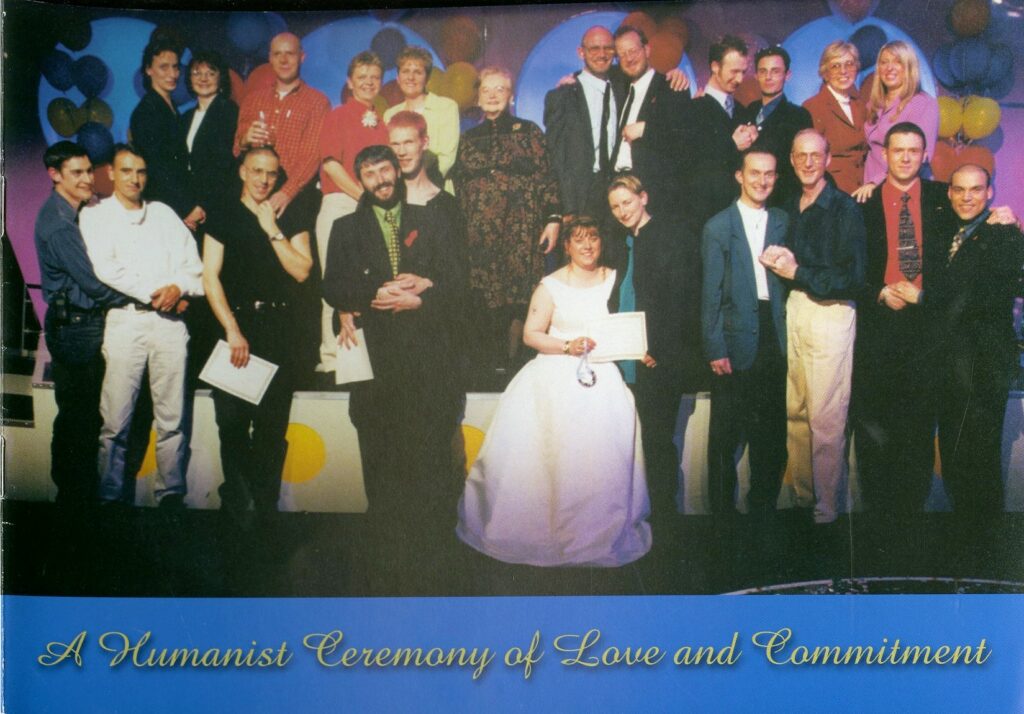-
‘Born of Mary…’
In 1976, Gay News publish a poem by James Kirkup entitled ‘The Love that Dares to Speak its Name’, a homoerotic depiction of the crucifixion of Christ. Outraged, the infamous conservative activist Mary Whitehouse launches the first prosecution for blasphemy in half a century against the magazine and its editor – and wins.
-
 A cartoon showing Mary Whitehouse, used several times by GHG such as on the front of The Gay Humanist newsletter in 1986
A cartoon showing Mary Whitehouse, used several times by GHG such as on the front of The Gay Humanist newsletter in 1986 -
As George Broadhead, GHG’s co-founder and longtime Secretary, would recall ten years later:
In the aftermath of the notorious Gay News blasphemy trial in 1977, a few Humanists who are also gay and involved in gay rights campaigning, discuss informally the possibility of setting up a gay Humanist group. Doubts are expressed as to the need for such a group since Humanists have been in the forefront of the struggle to achieve homosexual law reform and the official policies of all the national Humanist organisations are unequivocally supportive of gay rights.
Nevertheless, it is felt that gay people who are not aware of the Humanist outlook would benefit from knowing that there is a long and respectable alternative to the dominant Christian attitude to ethics and one which has contributed to a movement in favour of more liberal ideas about sex.
-
 The group launches officially at the Campaign for Homosexual Equality (CHE) Brighton Conference in August 1979.
The group launches officially at the Campaign for Homosexual Equality (CHE) Brighton Conference in August 1979. -
An opportunity too good to miss
With Whitehouse claiming that everything ‘good and true’ is being undermined by ‘the Humanist gay lobby’, the group’s co-founders seize their moment. As Broadhead would later write: ‘That there is no such lobby and the obvious concern that such an idea provokes provides the spark which convinces us that the opportunity offered to a gay Humanist group is too good to miss.’
-
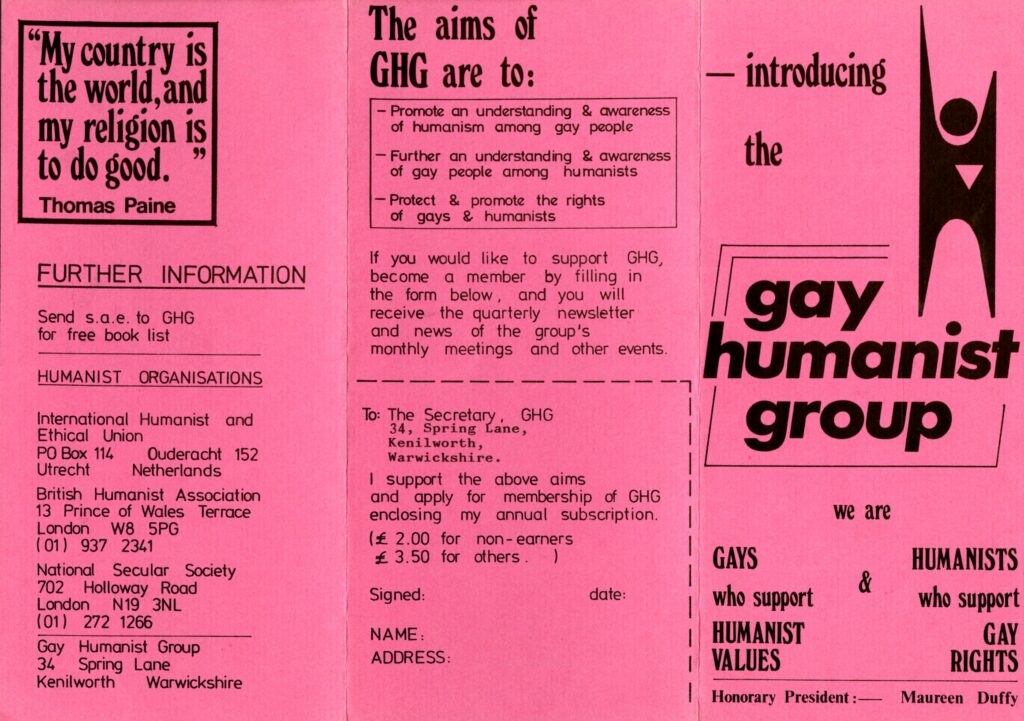 A leaflet introducing the Gay Humanist Group. The name will later change to the Gay and Lesbian Humanist Group, and ultimately to LGBT Humanists.
A leaflet introducing the Gay Humanist Group. The name will later change to the Gay and Lesbian Humanist Group, and ultimately to LGBT Humanists. -
For decades to come, the group serves a range of political, artistic and social functions, campaigning for gay rights as well as producing events and journalism. From protest marches to wedding ceremonies, group holidays to fairs, talks on pioneering artists to discussions of inspirational historical figures, much of GHG’s activities are archived for future generations.
Scroll on to explore some highlights from the collection.
